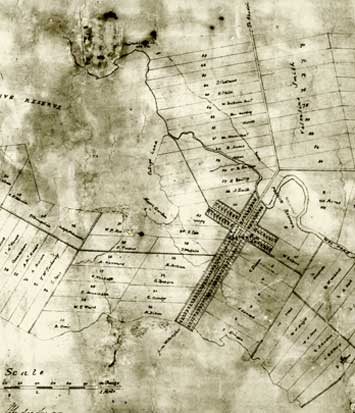The 1850s Onward
Land Wars
Tensions spread throughout New Zealand and the region as war ignites between Maori and Europeans over land in Taranaki and Waikato. Some land sales are disputed and the Kingitanga movement (Maori King movement) gains supporters. Against official caution and editorial scoffing a stockade is constructed across the road from where Aratoi sits today and Maori fortify a pa in the Ruamahanga valley. Calm leadership on both sides allows peace to prevail and the Wairarapa is the only North Island district to avoid armed conflict during a period which saw a large loss of life in other parts of New Zealand.
1867
January 5th – Greytown brothers Edward and Charles Grigg publish the first newspaper in the district, the Wairarapa Mercury, printing three issues a week. Journalist and editor Richard Wakelin takes over the business, and in August 1872 it becomes the Wairarapa Standard.
By 1860, three quarters of New Zealand’s exports are wool. With land licences ending wild competition for freehold land often involves dubious methods. Fifty people buy most of the 750,000 acres of ‘five shilling’ Crown land available in the Wairarapa.
1859
Tamahau Mahupuku begins writing down his tribal history while on a shearing run. This written history became a crucial and important part of New Zealand’s recorded Maori history. It is still used as a reference by Maori scholars today.
1859-61
Gold discoveries in Buller and Central Otago draw massive numbers of speculators. The first Cobb and Co coach service runs from Dunedin to the Gabriel’s Gully goldfield and the first gold shipment leaves for London in 1862. Large numbers of Wairarapa stock are sent south to feed the miners. Meanwhile in the Wairarapa people seek leisure, roads are slowly improving and the first cricket matches are organised. White Swan Disaster
1860s
The Ngati Kahungunu tohunga Te Matorohanga passes on his knowledge of history and traditions. Hoani Te Whatahoro Jury will later transcribe these stories, and Tamahau Mahupuku and others will help the ethnologist S. Percy Smith to translate them into English. The transcripts and translations are to become an important record of early Maori history.
1870s – 1880s
Breaking New Ground Prime Minister Julius Vogel’s settler development programmes include clearing the ancient forest Tapere nui a Whatonga (The Great Domain of Whatonga), also known as ‘Seventy Mile Bush’, between Masterton and Hawke’s Bay. Danish and Norwegian road-workers clear the Forty Mile Bush up to the Manawatu River in return for cheap land. The first group of settlers reaches the Kopuaranga ‘Camp’ in 1872, and then endure two years of appalling conditions in crude huts until the Mauriceville and Eketahuna settlements are cleared.
FELL ENGINE ON RIMUTAKA INCLINE
1874
The Manawatu Gorge road opens and ‘The Junction’ at Woodville becomes a base for road construction teams.
1876
James Bragge photographs memorable images recording Wairarapa’s development. WAIRARAPA RUGBY TEAM 1886
1888
The Mount Bruce Forest Reserve is formed to protect a surviving remnant of the original Seventy Mile Bush, Tapere nui a Whatonga (The Great Domain of Whatonga).
1890s – 1900s
Kotahitanga – Maori Parliament Delegations from many tribal areas meet at Papawai Marae near Greytown to discuss important issues at the Kotahitanga. After talks with Premier Richard Seddon and King Mahuta in 1897, the Maori Parliament supports a petition to Queen Victoria that all remaining Maori land should be protected.
OPENING OF AOTEA-TE WAIPOUNAMU
1897
H.P. Tunuiarangi (Major Brown) was made a Captain in a contingent of the Volunteer Force to accompany Premier Richard Seddon to Queen Victoria’s Diamond Jubilee celebration. On 2 July the colonial troops were reviewed by Queen Victoria, and Captain Tunuiarangi was presented to her. He was given a Jubilee Medal and a ceremonial sword inscribed for the occasion.While in London he petitioned for the remaining estimated five million acres of Maori land to be reserved in perpetuity. The petition and address was prepared at Papawai.
WILLIAM AND HERMANZE BEETHAM
Lower valley farmers have pressured the Government for thirty years to flood-proof land around Lake Wairarapa. After many contentious meetings, Ngati Kahungunu leaders agree in 1896 to cede the lakebed to the Crown. Maori were promised a fishing village at Lake Ferry but instead settled for 30,000 acres of steep hill country in Waikato, in 1906, but access to the important tuna (eel) fisheries that Maori knew for 800 years will not survive.
